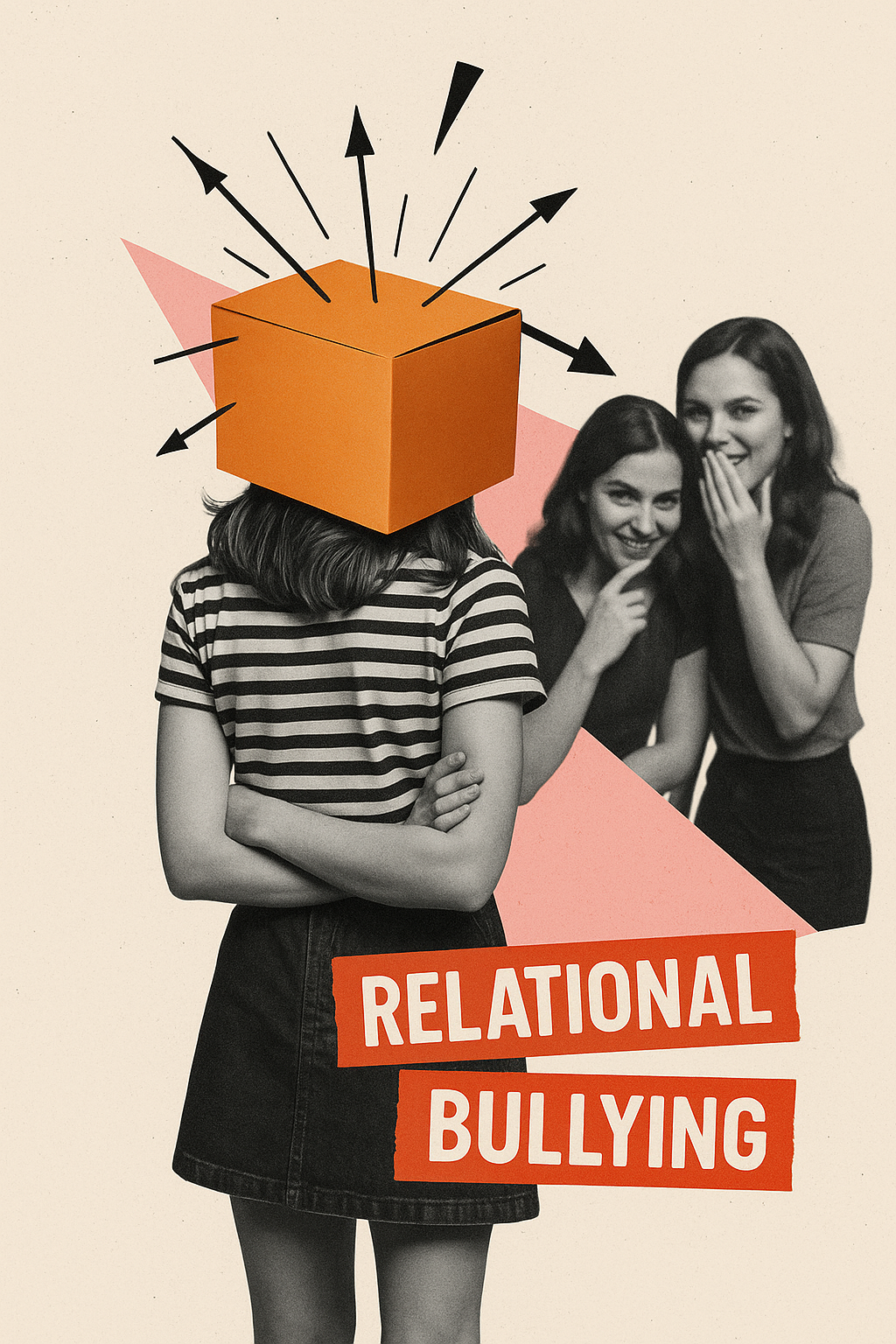Relational Bullying: When Words Cut Deep
Relational bullying doesn’t leave bruises—but it does break connections.
Relational bullying works through whispers, cliques, exclusion, and emotional control. It targets your reputation, your support system, and your belonging. While often overlooked, this form of social cruelty can have long-term psychological consequences — especially when it happens in families, schools, or tight-knit groups.
Below we break down what relational bullying is, how to recognize it, where it shows up, and what you can do about it — because no one should be isolated in silence just to protect the comfort of others.

What Is Relational Bullying?
Relational bullying is a form of social manipulation that uses exclusion, gossip, and emotional control to harm someone’s relationships and standing in a group. Rather than using physical force or direct insults, it works behind the scenes to isolate the target and shift the social dynamics against them.
According to StopBullying.gov, relational bullying involves behaviors like spreading rumors, publicly embarrassing someone, or encouraging others to reject or ignore them.
This form of bullying is common among teens and children — but it also occurs in adult families, workplaces, churches, and social circles. When it happens in a family system, it’s often brushed off as “drama” — but it’s abuse with real consequences.
How Common Is Relational Bullying?
Because relational bullying hides behind social norms, it’s often underreported and misclassified. But research shows:
- Youth: 1 in 5 students report being bullied at school, often through social exclusion
- Family systems: Emotional manipulation and triangulation are common in toxic households
- Adults: Workplace gossip and social ostracism affect team dynamics and mental health
- Online: Digital shunning, blocking, and rumor-spreading escalate the damage
Verywell Family emphasizes that relational aggression can be just as damaging as physical bullying, especially when sustained over time.
Signs of Relational Bullying
Relational bullying may not leave physical scars, but it chips away at your safety, reputation, and relationships. Here’s what it can look like:
Social & Emotional Signs
- Exclusion from group activities, chats, or invites
- Smiling to your face while gossiping behind your back
- Spreading rumors or inside jokes to humiliate you
- “Accidental” secrets, betrayal, or public embarrassment
Family Red Flags
- Siblings or relatives turning others against you
- Parents triangulating children or playing favorites
- Gaslighting or rewriting past events to make you doubt yourself
- “Silent treatment” or coldness as punishment
Where Relational Bullying Shows Up
At School
- Social cliques that exclude or mock others
- Spreading rumors or secrets
- Pretending to be friends, then betraying trust
In Families
- “Don’t tell them” secrets that isolate family members
- Gossip behind someone’s back to control the narrative
- Parents pitting siblings against each other
- Using group messages or holidays as emotional leverage
A 2014 Pediatrics study showed that children bullied by siblings experience increased levels of mental distress, anxiety, and depression — even as adults.
In the Workplace
- Gossip that ruins reputations
- Exclusion from meetings or events
- Managers who undermine certain employees while protecting others
- Cliques that control culture and silence dissent
What To Do If You’re Experiencing Relational Bullying
For Victims:
- Document everything: texts, screenshots, journal notes
- Avoid triangulation: speak directly if safe
- Set boundaries: even with family or long-time friends
- Seek outside support: therapy, advocacy, or community
- Don’t internalize it: their narrative isn’t your truth
For Bystanders:
- Don’t passively watch — small actions can shift power
- Include the isolated person — even just a message can help
- Refuse to engage in gossip or exclusion
For Families & Organizations:
- Stop minimizing toxic dynamics
- Create safe reporting systems
- Offer education on relational and emotional abuse
- Don’t reward silence or false harmony

Frequently Asked Questions on Relational Bullying
How is relational bullying different from emotional bullying?
Persistent criticism, gaslighting, public or private humiliation, guilt-tripping, manipulation, exclusion, and unpredictable emotional outbursts are common tactics. Emotional bullies often target control through subtle or covert behavior.
Can relational bullying happen in healthy families?
Emotional bullying can lead to depression, anxiety, PTSD, sleep problems, low self-worth, headaches, and even immune system suppression. Over time, it can cause serious mental and physical health issues.
How do I know I’m not just being “too sensitive”?
If you’re feeling isolated, confused, or consistently blamed while someone else controls the narrative, you’re likely experiencing relational abuse — not overreacting.
In The Gaslight Effect, Dr. Robin Stern outlines how social manipulation, silent treatment, and selective truth-telling are forms of psychological control.
Let’s Break the Cycle
Relational bullying is often invisible—but its impact is personal and profound.
Relational bullying isolates people through whispers, cliques, and control. Whether it’s in a family, a workplace, or a friend group, it cuts deep — often without a sound. No one should be cast aside, excluded, or turned into the scapegoat.
If you’re being shut out—or see someone else being targeted—The Echo Movement is here. Together, we can challenge relational abuse, create accountability, and rebuild spaces that honor dignity, connection, and truth.
